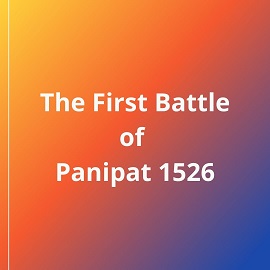Table of Contents
Delhi Sultanate Administration:
The Sultan:
The Sultan of Delhi was “in theory an unlimited despot, bound by no law, subject to no ministerial check, and guided by no will except his own. The people had no rights, only obligations; they only lived to carry out his commands”. He was the chief law giver and the final court of appeal. His authority rested upon the army and so he was the chief commander of the military forces. In short, he was the pilot of administration which depended for its efficiency on his personal supervision. He had a council of trusted advisers called Majlis-i-Khalwat, which he consulted on important occasions but he was not bound to accept its decision.
The Central Government:
The Sultan ruled through ministers and a group of officials. The main pillars of the central government were the ministers or the imperial diwans. According to Barani, there were four important ministers, comparable to four pillars, on which the edifice of administration rested. These were Diwan-i-Wizarat, Diwan-i-Arz, Diwan-i-Insha, Diwan-i-Risalat.
Wazir was the head of the finance department, called Diwan-i-Wizarat. He had a number of powerful assistants, three among whom deserve special mention- naib wazir, mustauf-i-mamalik and mushrif-i-mamalik. Naib Wazir acted as his chiefs deputy. The mustauf-i-mamalik was the auditor general whose duty was to check the expenditure of the state. The mushrif-i-mamalik was equivalent to the present day accountant general whose office used to maintain the accounts of the state.
Ariz-i-Mumalik was the head of the military department called Diwan-i-Arz and was next to the wazir in importance. This department was constituted by Balban. It was associated with recruitment, maintenance and the distribution of salary to the army but Ariz-i-Mumalik was not gracing the post of the supreme commander but rather it was Sultan who worked as the supreme commander. When under Alauddin Khalji military reforms were carried on and the system of Dagh (branding of horses) & Chehra (Huliya or maintain the descriptive role of each soldier) was introduced the responsibility of the department increased further.
The Diwan-i-Insha or Department of Correspondence was headed by Dabir-i-Khas and staffed by secretaries called dabirs. This ministry was in charge of drafting royal proclamations, official despatches, letters to provincial governors, officers etc.
The Diwan-i-Risalat or Ecclesiastical Department was headed by Sadr-i-Jahan. Muhtasibs or censors of public morals were another set of officials who came under Sadr. They were responsible for the proper observance of obligatory duties of the Muslim subjects. They also acted as a check on prices, weights and measures.
Other departments of the state include Diwan-i-Bandagani or the Department of Slaves created by Firuz Tughluq, Diwani-Amir Kohi or the Department of Agriculture created by Muhammad Tughlaq, Diwan-i-Mustakhiraj or the Department to look after and realise arrears from collectors or agents created by Alauddin Khilji, Diwan-i-Khairati or the department of charity in Firuz Tughlaq’s reign, Diwan-i-Islihqaq or the Department of Pensions, mint and Karkhanas.
Military Organization:
The military organization of the Sultanate was based mainly on the Turkish model. The government during the Sultanate was sustained on military strength. The Sultans had to maintain a large army. It consisted of three wings– the cavalry, the infantry and the elephant corps. The cavalry was the most effective part of the army. The army was not rational, the recruits being drawn from various nationalities such as the Turks, the Persians, the Afghans, the Rabs, Indian Musalmans and the Hindus etc. The whole army administration was under the charge of the department known as Diwan-i-Ariz. There were many kinds of corruption in the army such as false muster and attendance by proxy. Alauddin reformed these abuses and laid the foundation of a standing army which was directly recruited and paid by the state. The army was organized on a decimal system. A body of ten horsemen under an officer known as “Sar-i-Khalis” formed the lowest unit. The next higher rank was that of “Sipah Salar” who had ten “Sar-i-Khalis” under him. The amir was in charge of the royal guards of the Sultan and was an important military official. The forts were considered great bulwarks of strength. Each fort had its commandant who was generally called the kotwal and he kept the keys of the fort.
Local Administration:
The administration followed by the Delhi sultans was essentially of a military nature. The kingdoms of the various dynasties were categorized into a number of divisions called iqtas, each under an iqtadar, muqti or wali. Therefore, iqtas were territorial units allotted to nobles, performing civil and military duties, in lieu of their salary. The main functions performed by the iqtadars included the collection of land revenue, which was payable to the central treasury, and the maintenance of law and order. Out of the land revenue collected, a fixed share was given to the state, while the rest went towards the expenditure of governing the iqtas and the personal expenses of the iqtadars. The provinces were divided into shiqs and the next division was pargana. The shiq was under the control of shiqdar. The pargana comprising a number of villages was headed by amil. The village remained the basic unit of the administration. The village headman was known as muqaddam or Chaudhari. The village accountant was called patwari.









Comments (No)